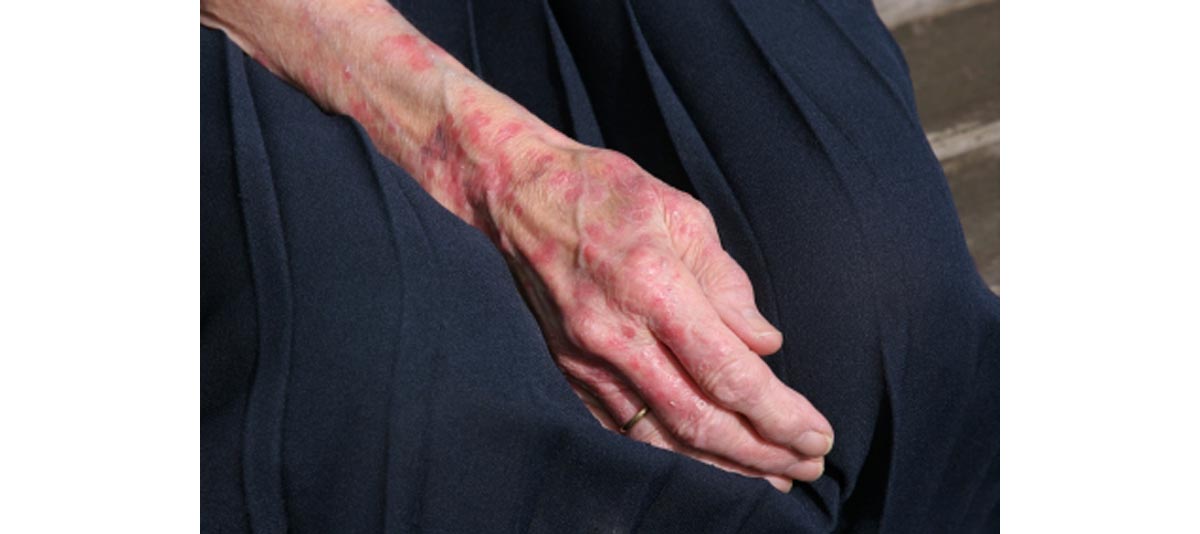Hansen’s disease or leprosy — a chronic disease caused by a bacterial infection

Most people have heard of leprosy — but whether you live in a developed country and have never come across the disease yourself, or you live in a region that is still affected by leprosy, some of the many myths that surround this condition are bound to have crept up on you. In no particular order, they are:
- Leprosy is highly contagious and makes people dangerous and "untouchable".
- Leprosy is a lifelong disease that can never be cured.
- Leprosy makes body parts fall off.
- Leprosy was a problem in the past, but it has since been eliminated.
What should you actually know about this disease, which is today called Hansen's disease?
The disease is progressive and will cause irreparable damage to the limbs, nerves, eyes and skin if left untreated. Leprosy has been present in the human race for more than 4,000 years and was witnessed in Chinese, Egyptian and Indian civilizations. Within the past 20 years, approximately 20,000,000 people have been cured of leprosy and the rates are increasing.
Still, at least 200,000 people are diagnosed with Hansen's disease every year — including as recently as 2019. The World Health Organization registers the global occurrence of leprosy every year. Although cases have dropped from where they once were, and the number of new Hansen's disease cases are on the decline, leprosy very much still remains a global health problem.
January 31st, Worldwide Leprosy Day
Every year on January 31, the world recognizes leprosy and increases public knowledge and awareness about the disease. The day is focused on increasing the flow of money for research studies, treatment and leprosy education which helps to bring about a better understanding of the disease. Worldwide Leprosy day has been observed globally since 1954; the day gives medical professionals the chance to let others know that the disease is curable and raises hope for others that suffer from the disfiguring ailment.
January 25-31, Worldwide Leprosy Week
January 25 to January 31, people all around the globe observe Worldwide Leprosy Week. During the week, people all over the world get the chance to learn about leprosy, how it is diagnosed, who is affected and how it is treated, which in turn raises social and global awareness of the disease.
Leprosy Information
Leprosy is one of the oldest diseases known to mankind and the disease causes untold pain, suffering and stigma to those that have it. Starting in 1991, the World Health Organization started a worldwide campaign designed to reduce the number of cases. The disease commonly strikes in tropical and subtropical climates and is a serious problem in the countries of Brazil, Mozambique, India, Nepal, Madagascar and Myanmar.
Leprosy occurs in areas where there is a dense population, poor health care, improper sanitation and children are at a great risk of contracting the disease than adults, contrary to popular belief. In America, there are approximately 100 cases of leprosy diagnosed and reported each year, which mostly happens in the immigrant population. The disease is (only mildly) contagious but does not easily spread from person to person; researchers believe the route of transmission is via respiratory droplets. Some people have a natural immunity to the disease and once a person has been exposed and is on medications, leprosy is no longer active after 3-4 days.
Read More: Leprosy - Unfinished Story
Overview
With early diagnosis and treatment, the disease of leprosy can be eliminated from the world. Doctors and medical researchers can prescribe a regimen of prescription drugs — strong antibiotics — that will kill the bacteria that causes leprosy and a person may need to take the medicine for a period of 6 months or for as long as 6 years. Despite the stigma that is attached to leprosy, there is no medical need to separate people with the disease from the rest of society. Through proper sanitation, hand washing, disinfecting and monitoring, the disease can be controlled and leprosy can be prevented. Very soon, a vaccine against leprosy is likely to join the many safe and effective vaccines that scientists have already developed — and with a successful campaign, Hansen's disease can finally be confined to the place where it belongs: history.
- www.who.int/wer/2008/wer8333.pdf
- en.wikipedia.org/wiki/Leprosy
- www.medindia.net/news/healthinfocus/worldleprosyday.asp
- www.encyclopedia.com/doc/1G2-3497700240.html


Your thoughts on this